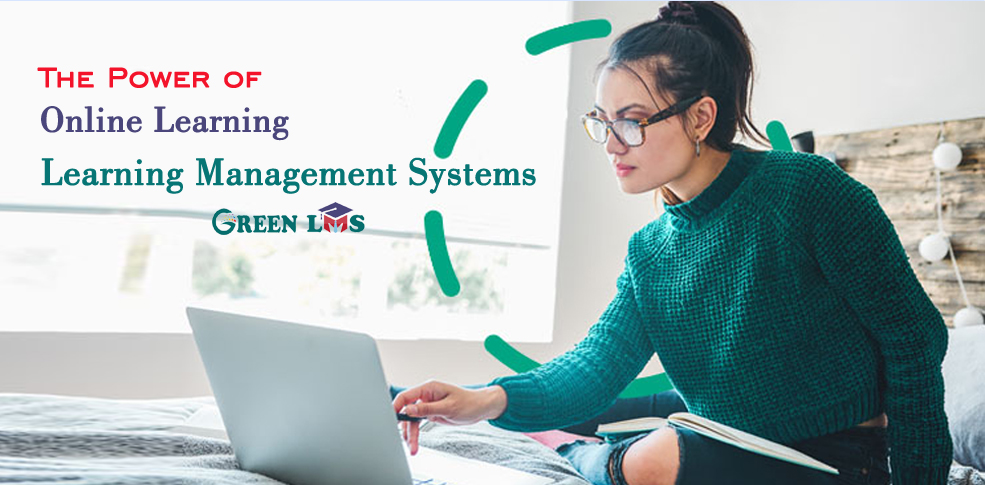Learning Management Systems (LMS) are revolutionizing the way individuals and organizations learn. This comprehensive guide delves into the concept of LMS, exploring its functionalities, benefits, and applications across diverse sectors.
Unpacking the LMS Acronym:
L – Learning: LMS facilitates access to learning materials, enabling anytime-anywhere learning. Learners can access resources, participate in assessments, and complete assignments, creating a personalized learning journey.
M – Management: Unlike traditional file sharing platforms, an LMS provides comprehensive management capabilities. Administrators can manage user data and enrollments, organize content into structured programs, and control learner progress, streamlining the learning process.
S – System: LMS functions as a sophisticated system that processes data, generates reports, and automates tasks. This includes grading, reporting, and performance tracking, ensuring efficiency and data-driven insights.
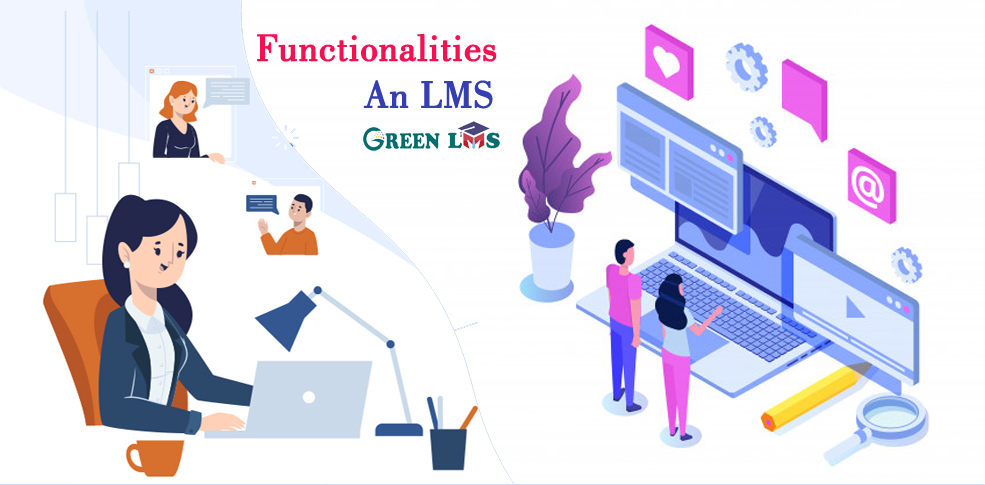
Functionalities of an LMS:
Content Management: Upload, organize, and deliver diverse learning materials like documents, videos, audio files, and interactive elements.
Course Creation and Delivery: Design structured courses with modules, lectures, assessments, and interactive activities, catering to specific learning objectives.
Assessment and Evaluation: Implement various assessments like quizzes, assignments, and projects to measure learner comprehension and track progress.
Learning Paths and Personalized Learning: Tailor learning experiences to individual needs and preferences by creating customized learning paths.
Communication and Collaboration: Foster interaction and knowledge sharing among learners through discussion forums, chat rooms, and group projects.
Reporting and Analytics: Generate comprehensive reports and gain valuable data on learner progress, course completion rates, and learning outcomes.
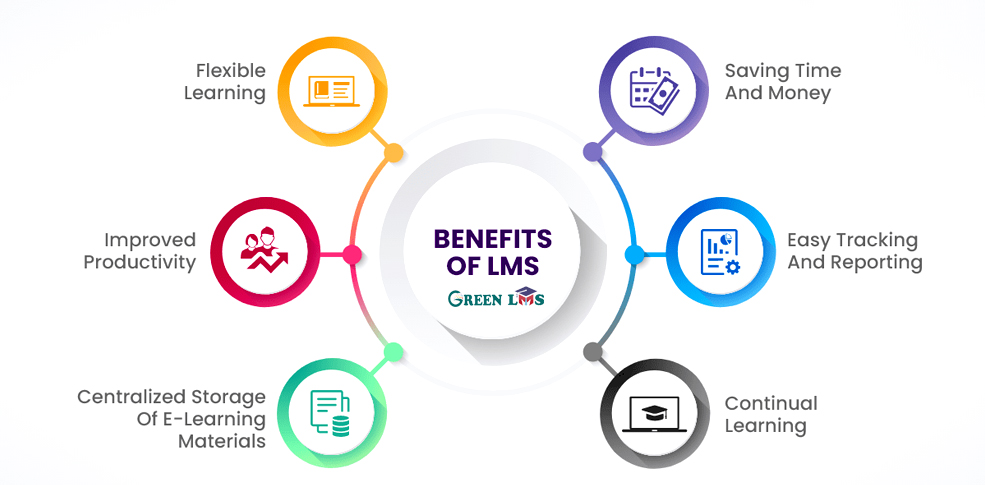
Benefits of Implementing an LMS:
Increased Accessibility and Flexibility: Learners can access learning materials and participate in courses anytime, anywhere, regardless of location or time constraints.
Enhanced Engagement and Motivation: Interactive elements, gamification, and personalized learning keep learners engaged and motivated throughout their learning journey.
Cost-Effectiveness: LMS eliminates the need for physical classrooms and reduces administrative tasks, optimizing resource utilization.
Improved Collaboration and Communication: Learners can connect with instructors and peers, share ideas, and collaborate on projects, fostering a sense of community.
Data-Driven Insights and Informed Decision-Making: Comprehensive analytics provide valuable data on learner progress, enabling instructors to personalize teaching approaches and improve learning outcomes.
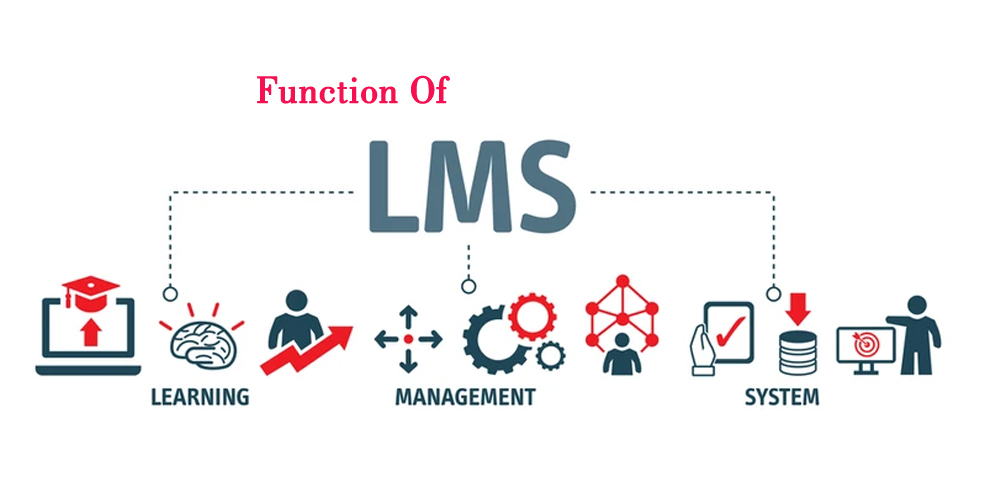
Applications of LMS:
Corporate Training and Development: Onboard new employees, provide compliance training, and foster professional development for a skilled workforce.
Online Universities and Educational Institutions: Deliver online courses, manage student enrollments, and track academic progress.
Non-Profit Organizations and Community Learning Initiatives: Train volunteers, share knowledge, and empower individuals to contribute to the community.
Government Agencies and Workforce Development Programs: Deliver training, track compliance, and upskill employees to meet organizational goals.
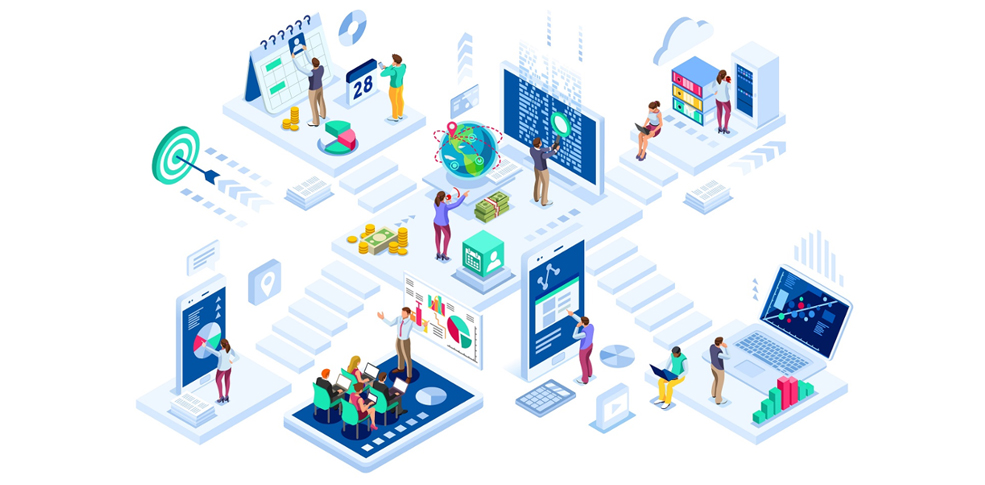
Beyond Technology: The Human Element:
While technology is crucial, the success of an LMS relies heavily on the human element:
Instructors: Develop engaging content, facilitate learning activities, and provide personalized feedback to enhance learner understanding.
Learners: Actively participate in the learning process, engage with the material, and collaborate with peers to maximize learning outcomes.
Administrators: Manage the system efficiently, provide technical support, and ensure a positive learning environment for all users.
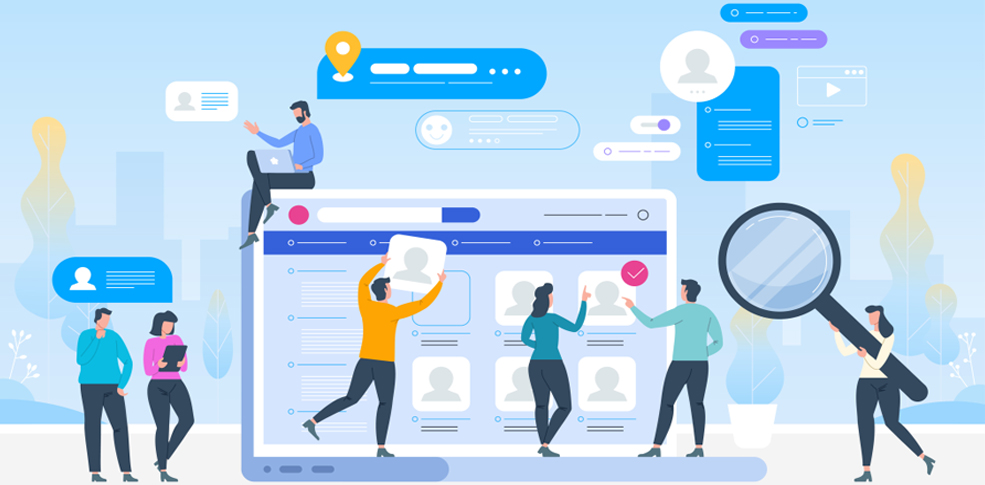
The Road Ahead: Future of LMS:
The world of LMS is constantly evolving, driven by technological advancements and changing learning needs. Here are some emerging trends:
Artificial Intelligence (AI) and Machine Learning: AI-powered personalization will tailor learning experiences to individual strengths, weaknesses, and learning styles.
Advanced Analytics and Reporting: Granular data insights will enable educators to optimize learning experiences and improve learning outcomes.
Immersive Technologies: Virtual Reality (VR) and Augmented Reality (AR) will create engaging and interactive learning environments.
Mobile-First Learning: LMS platforms will be optimized for mobile devices, allowing for seamless learning on-the-go.
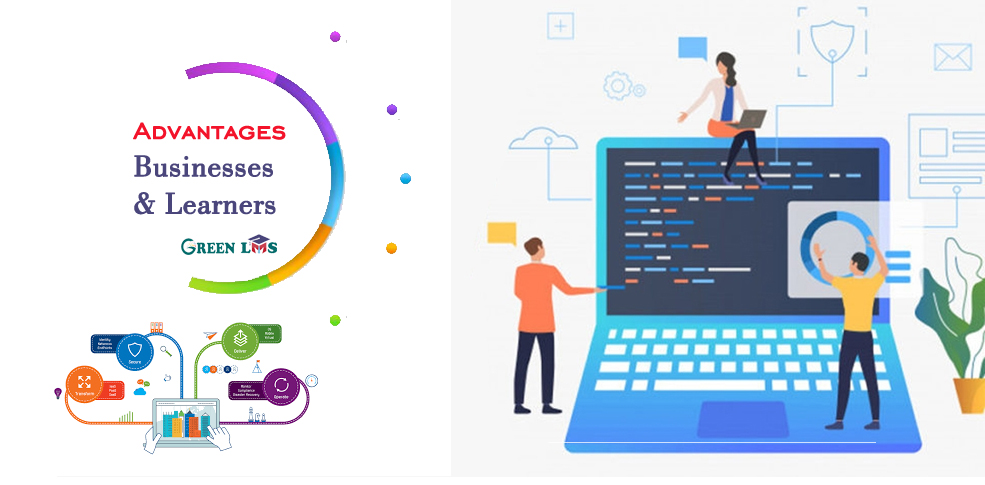
Learning Management Systems: Advantages for Businesses and Learners
Learning Management Systems (LMS) have emerged as powerful tools, revolutionizing the way we approach training and learning. But what exactly are the benefits that make LMSs so valuable for both businesses and individual learners?
Benefits for Businesses:
Reduced Training Costs: LMSs eliminate the need for physical training facilities and resources, significantly reducing training costs. Additionally, online learning allows for scalability, reaching a wider audience without incurring additional expenses.
Faster Onboarding: Streamline the onboarding process by delivering consistent, standardized training materials through the LMS. This ensures new employees are quickly up-to-speed and equipped to contribute effectively.
Enhanced Compliance Training: Stay ahead of compliance regulations by using the LMS to deliver mandatory training programs and track employee completion rates. This helps mitigate risk and ensure compliance with industry standards.
Improved Product Training: Equip your sales associates and customer support specialists with in-depth product knowledge through comprehensive online training modules. This leads to increased customer satisfaction and boosted sales performance.
Streamlined Partner Training: Ensure consistency and clarity in your partner training programs by delivering all materials and resources through the LMS. This fosters strong communication and collaboration among partners.
Effective Customer Training: Educate your customers on product features and functionalities through interactive learning modules hosted on the LMS. This empowers customers to make informed decisions and maximize their product experience.
Tailored Learning Paths: Create personalized learning paths for individual employees based on their roles, skills, and development needs. This promotes individual growth and better aligns training with specific job requirements.
Improved Performance and Promotions: By providing ongoing learning opportunities and measuring training effectiveness, businesses can identify high-performing individuals and create pathways for promotion within the organization.
Data-Driven Insights: Gain valuable insights from LMS analytics to track learning progress, identify areas for improvement, and optimize training programs for maximum effectiveness.

LMS: Benefits for Learners:
Anytime, Anywhere Learning: Access learning materials and complete training modules from any device, at any time that suits your schedule. This flexibility allows for a personalized and convenient learning experience.
Increased Engagement: Interactive learning elements like gamification, simulations, and collaborative activities keep learners engaged and motivated throughout the training process.
Personalized Learning Paths: Pursue individual learning goals by tailoring your learning journey to your specific interests and needs. This allows for a deeper understanding and mastery of subject matter.
Improved Knowledge Retention: Online learning platforms often incorporate spaced repetition techniques and reinforcement activities, leading to better knowledge retention and improved recall of learned material.
Collaborative Learning: Interact with other learners through discussion forums, chat rooms, and group projects. This fosters knowledge sharing, peer support, and a sense of community within the learning environment.
Performance Tracking: Track your progress through the LMS, monitor your learning achievements, and identify areas where you can improve. This promotes self-awareness and motivates continuous learning.
Skill Development: Enhance your skills and acquire new ones through diverse learning modules and resources available on the LMS. This empowers you to become more competitive and qualified in your field.
Career Progression: By demonstrating your commitment to learning and development through LMS training, you can increase your marketability and pave the way for career advancement.
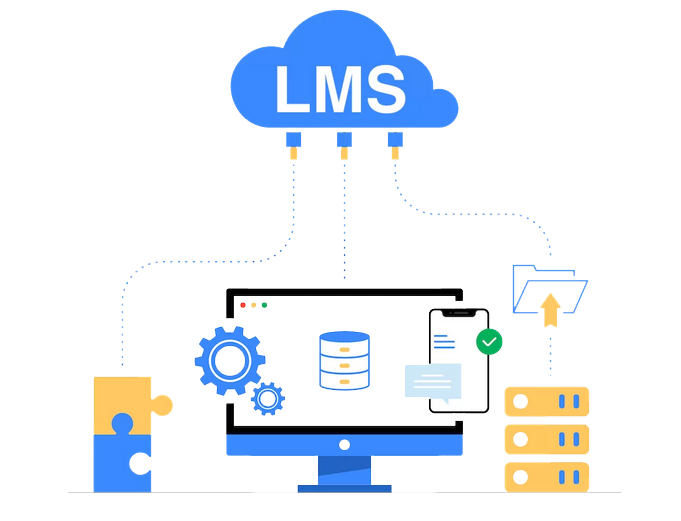
Unveiling the Diverse Landscape of Learning Management Systems
Delving deeper into the technical aspects, let’s explore the different types of Learning Management Systems (LMS) and their key distinctions.
Corporate vs. Academic LMS:
While both types automate training processes and provide online access to learning materials, their core objectives and functionalities diverge:
Learning Goals: Corporate training prioritizes practical application, aiming for immediate return on investment (ROI). Academic learning, in contrast, focuses on fostering a deep knowledge base and a thirst for further learning.
Course Timeline: Corporate training often operates under tighter time constraints, necessitating flexible platforms that adapt to various schedules and business needs. Academic institutions, on the other hand, follow established timeframes like semesters and quarters, requiring functionalities like scheduling units for holidays, exams, and breaks.
Certifications vs. Grades: Corporate LMSs typically track progress through certificates of completion, while academic platforms rely on traditional grading systems. Gradebooks, attendance tracking, assignment results, and individual student rosters are integral features for academic institutions.
Social Learning Tools: Academic LMSs often incorporate features like student group creation for collaborative projects and breakout sessions, discussion boards, and built-in web conferencing tools.
Content Updates: Educational content remains relatively static, requiring less frequent updates compared to corporate platforms where rapid adaptation to changing market demands is crucial.
Free vs. Commercial LMS:
Free/Open-Source: While appealing due to the absence of license fees, these platforms may incur hidden costs. Setting up servers, customizing branding, and ongoing upgrades often require technical expertise, potentially negating the cost advantage.
Commercial: Paid LMS solutions offer ease of deployment and use, eliminating technical burdens and providing valuable support services.
SaaS/Cloud LMS vs. Locally Hosted LMS:
SaaS/Cloud: Ideal for organizations lacking dedicated IT staff, cloud-based LMSs offer convenient deployment, server maintenance, and backup services by the vendor.
Locally Hosted: Provides greater control over data security but requires significant in-house IT expertise for server management, backups, and upgrades.
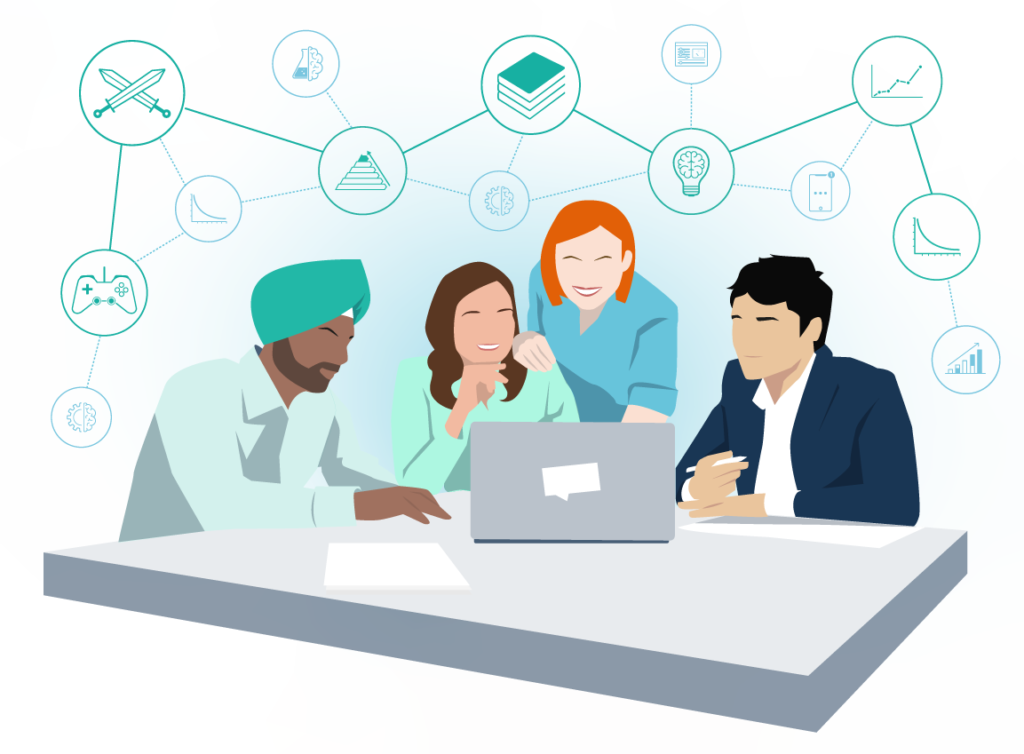
LMS vs. LCMS (Learning Content Management System):
LMS: Focuses on managing learning content, delivering courses, and tracking learner progress.
LCMS: Offers additional functionalities for creating and authoring e-learning content.
Choosing the Right LMS:
Built-in vs. Separate Authoring Tools: Built-in authoring tools often lack advanced functionalities, while separate tools may pose compatibility issues. Bundled LMS and authoring tool solutions like iSpring Learn offer a seamless and powerful experience.
Data Security: Ensure your chosen platform employs robust encryption protocols and secure data backups to address potential security concerns.

Navigating the Landscape of LMS Standards: Ensuring Compatibility and Interoperability
Choosing a Learning Management System (LMS) that seamlessly interacts with your preferred authoring tools is crucial for effective e-learning. Understanding the key LMS standards can help you make informed decisions and guarantee smooth information exchange between platforms.
The Five Pillars of LMS Compatibility:
AICC (Aviation Industry Computer-Based Training Committee): This legacy standard predates SCORM and utilizes HTTP for information transfer. While no longer actively developed, some LMSs and authoring tools remain AICC-compliant.
SCORM (Sharable Content Object Reference Model): This widely adopted standard enables content interaction with the LMS, facilitating progress tracking and managing course structure. Four versions exist – 1.0, 1.1, 1.2, and 2004 – each offering varying levels of functionality.
xAPI (Experience API) or Tin Can: A next-generation standard, xAPI expands data exchange capabilities beyond the LMS, encompassing talent management systems, mobile apps, and more. It excels at tracking diverse learning activities, including simulations and experiential learning.
LMS LTI (Learning Management System Tool Interoperability): Popular in higher education, LTI allows creators to build courses within their preferred tools and share them across various LMS platforms. This promotes flexibility and content reuse.
cmi5 (Common Model for Interoperability Version 5): This emerging standard combines the strengths of SCORM and xAPI, offering offline viewing on mobile devices and detailed analytics for various content formats like PDFs, videos, and games.

Ensuring Compatibility:
Choosing an LMS and authoring tool that adhere to compatible standards is crucial. Many LMSs support multiple standards, offering flexibility. For example, an LMS compliant with SCORM 2004 and xAPI can interact with content created using either standard.
Beyond Compatibility:
While compatibility is essential, other factors like features, tracking capabilities, and pricing also play a role in choosing the right LMS.
Common Features:
- Content management and delivery
- Assessment and evaluation
- Learner profiles and progress tracking
- Reporting and analytics
- Communication and collaboration tools
Tracking Options:
- Quiz scores and completion rates
- Time spent on learning activities
- Learner interactions and engagement
- Offline learning progress (with xAPI/cmi5)
Pricing Models:
- Subscription-based (annual or monthly)
- Per-user fees
- One-time license fees
- Free open-source options
Understanding these elements empowers you to navigate the complex landscape of LMS standards and choose the perfect combination for your specific e-learning needs. Remember, compatibility is just one piece of the puzzle. Consider the overall features, tracking options, and pricing to find the solution that best fits your budget and learning goals.
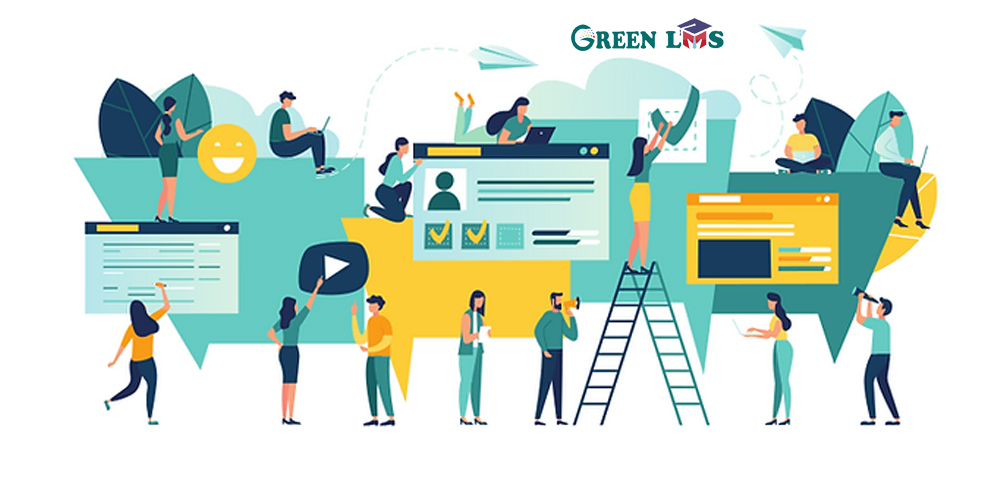
Unveiling the Essential and Advanced Features of Learning Management Systems
While the exact feature set of a Learning Management System (LMS) can vary, some functionalities are considered essential, while others offer advanced capabilities. Understanding this distinction helps you identify the LMS that best aligns with your specific needs.
Essential Features:
User Management: Add, edit, and manage user accounts, assign roles, and group learners into organizations for efficient administration.
Course Management: Deliver learning materials to specific learners, organize courses into modules, and manage access permissions.
Progress Tracking: Assess learner performance in real-time, track progress through quizzes, assignments, and course completion rates.
Advanced Features:
Content Creation: Built-in editors allow you to create engaging e-learning content directly within the LMS, eliminating the need for external authoring tools.
ILT Classroom Integration: Extend the LMS’s reach beyond online learning by supporting classroom-based initiatives, managing schedules, and tracking attendance.
Mobile Learning: Native mobile apps provide learners with access to courses and resources even when offline, fostering flexibility and accessibility.
Social Learning: Encourage interaction and knowledge sharing through discussion forums, social features like posts and comments, and gamification elements like points, badges, and leaderboards.
White Labeling and Customization: Personalize the LMS interface and branding to maintain consistency with your organization’s visual identity and enhance the user experience.
Gamification: Leverage game mechanics like points, awards, and badges to boost learner engagement, motivation, and retention, making learning more enjoyable and effective.
Certification: Issue official certificates of completion for courses and professional certifications, recognizing learner achievements and validating acquired skills.
Beyond Functionality:
Remember, the ideal LMS goes beyond simply offering a comprehensive set of features. Consider factors like ease of use, scalability, security, and integration capabilities when making your decision. Choosing the right LMS can empower your organization to create transformative learning experiences and achieve its strategic learning objectives.

Demystifying LMS Tracking: Unveiling Insights and Measuring Learning Impact
Learning Management Systems (LMS) offer invaluable tools for tracking training progress and gaining vital insights into learner performance. These detailed reports empower organizations to assess the effectiveness of their training programs and make data-driven decisions for continuous improvement.
Essential Training Metrics and Reports:
Learner Progress and Completion Rates: Track learner engagement by monitoring their progress through courses and modules, ensuring they are actively participating and completing assigned materials.
Online Learning Assessment Results: Analyze assessment data to identify areas of strength and weakness for individual learners, enabling targeted interventions and personalized support.
Course Overview Reports: Gain comprehensive insights into course performance by reviewing completion rates, average time spent on activities, and learner scores. This data allows for identifying potential bottlenecks and optimizing course design for maximum impact.
Satisfaction Rates: Gauge learner satisfaction by conducting surveys, polls, and questionnaires. Understanding how learners perceive the learning experience is crucial for making informed decisions about content, delivery methods, and overall program design.
Beyond the Basics:
Advanced LMS tracking capabilities extend beyond these core metrics, offering deeper insights into specific learning behaviors and patterns. This includes:
Detailed Activity Logs: Track individual actions within the LMS, including content accessed, time spent on specific topics, and quiz responses. This granular data provides valuable insights into learner engagement and learning styles.
Competency Tracking: Track the development of specific skills and competencies over time, enabling personalized learning paths and targeted development interventions.
Learning Engagement Metrics: Analyze learner interactions with course materials, discussion forums, and collaboration tools to identify areas where engagement could be enhanced.
Group and Cohort Performance: Compare learning outcomes across different groups or cohorts to identify trends and differences in performance. This allows for targeted interventions and adjustments to ensure all learners are achieving optimal results.

Benefits of LMS Tracking:
Enhanced Training Effectiveness: Track and measure the impact of training on learner performance and organizational goals.
Personalized Learning: Identify individual learner needs and provide personalized learning pathways to optimize knowledge acquisition and skill development.
Data-Driven Decision Making: Utilize data insights to make informed decisions about curriculum development, training delivery methods, and resource allocation.
Improved ROI: Track return on investment (ROI) for training programs by quantifying the impact on learner performance and organizational outcomes.
LMS tracking is a valuable tool for organizations seeking to maximize the effectiveness of their training programs and empower their learners to achieve their full potential. By leveraging detailed reports and data analysis, organizations can gain a deeper understanding of learner behaviors, identify areas for improvement, and ultimately achieve their strategic learning goals.

Navigating the Financial Landscape of Learning Management Systems: Pricing Models Explained
Choosing the right Learning Management System (LMS) hinges not only on its functionalities but also on its pricing model. Understanding the different approaches and their implications is crucial for making a financially sound decision.
Common LMS Pricing Models:
Pay per active user: This model charges a fee for each user who actively uses the LMS during the billing cycle. It aligns with actual usage but can become expensive for organizations with a large number of users.
Pay per learner: Unlike the active user model, this one charges a fixed fee for a predetermined number of learners, regardless of their activity level. This option is suitable for organizations with stable learner numbers but can be inefficient if usage fluctuates significantly.
Pay as you go: This model offers flexibility by charging only for the resources used, such as the number of active users and the courses they take. It is a cost-effective option for organizations with unpredictable training needs but may lack scalability for large-scale deployments.
License fee/subscription: This model involves paying a recurring monthly or annual fee for access to the LMS platform. The price often varies depending on the included features and functionalities. This option provides predictable costs and scalability but requires upfront commitment.
Choosing the Right Model:
The ideal pricing model depends on several factors, including:
Budget: Consider your budget constraints and projected training needs to choose a model that aligns with your financial resources.
User base: Analyze the number of active users and potential fluctuations to determine the most cost-effective model.
Resource usage: The desired features and functionalities can influence the pricing model. Choose a model that provides access to the resources you need without paying for unnecessary features.
Scalability: Ensure the chosen model can accommodate potential growth in your organization and training needs.
Additional Resources:
Free White Paper: “How to Choose a Learning Management System” provides valuable insights and guidance for training managers and L&D professionals. This resource equips you with the knowledge to choose an LMS that yields a positive return on investment for your training and development efforts.
LMS Comparison Table: Explore a comprehensive comparison of different LMS vendors and their pricing models. This table helps you compare options side-by-side and find the most suitable solution for your specific needs.
By understanding the various LMS pricing models and considering your unique organizational context, you can make an informed and financially responsible decision when choosing the right platform to empower your learners and achieve your training goals.
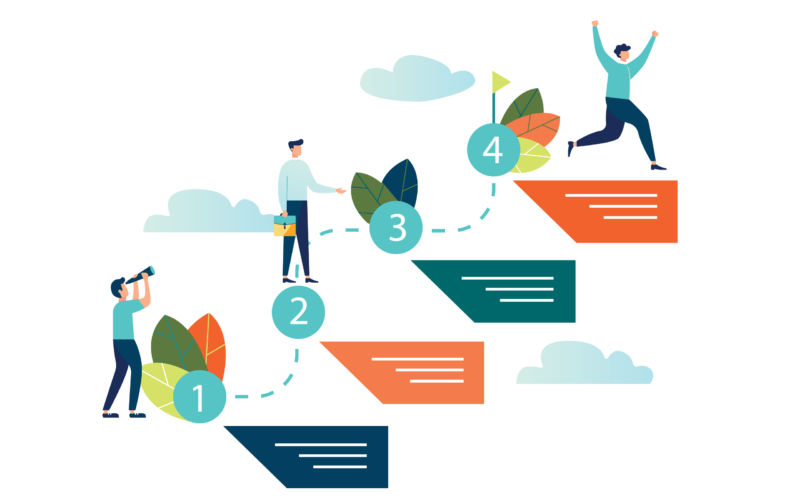
Organizing Learning with Green LMS: A Step-by-Step Guide
Green LMS, a cloud-based Learning Management System (LMS), streamlines the training process with its intuitive interface and powerful features. Here’s how you can organize learning with Green LMS:
Step 1: Upload Courses:
1. Accessible Upload: Similar to Google Drive or Dropbox, Green LMS allows uploading content through a simple “Upload File” button.
2. Format Flexibility: Upload various formats, including PPT presentations, audio/video files, text documents, and SCORM courses.
3. Structured Learning: Combine uploaded materials into learning tracks for a cohesive learning experience, even for complex topics. Set evaluation criteria to assess learner progress.
Step 2: Add Users:
- Role Management: Assign different user roles for efficient administration.
- User Types: Green LMS recognizes three main user types:
- Learners: Take assigned courses and study available materials.
- Authors: Manage courses and content, adding, removing, and assigning them to learners.
- Administrators: Add and remove users, group them, and assign roles.
- Simplified Onboarding: Automate user onboarding through email invitations or importing user lists from XLSX files.
- Group Organization: Divide learners into groups based on experience (“newcomers” vs. “pros”) or work areas (“sales,” “security,” etc.).
Step 3: Deliver Knowledge:
1. Accessibility: Grant course access to all users or specific individuals via email.
2. Mobile Learning: Learners can access courses on various devices, including tablets and smartphones, using the free Green LMS mobile app.
3. Offline Learning: The mobile app allows learners to study offline, enabling them to learn when and where it’s convenient.
Step 4: Evaluate Results:
1. Real-time Progress Tracking: Monitor learner progress in real-time, gaining insights into completion rates, time spent, attempts made, and more.
2. Detailed Statistics: Access comprehensive data to assess training effectiveness and identify areas for improvement.
Green LMS Benefits:
- Simple Interface: Easy to navigate and use for both administrators and learners.
- Content Flexibility: Supports various content formats for diverse learning styles.
- Automated Processes: Streamlines administration tasks for improved efficiency.
- Mobile Learning: Enables learning on the go, increasing accessibility and engagement.
- Data Insights: Provides valuable data to measure training effectiveness and make informed decisions.
By following these steps and leveraging Green LMS powerful features, you can effectively organize learning, deliver knowledge in an engaging manner, and measure the success of your training programs.
Unveiling the Power of LMS Trials: Experiencing the Benefits Before You Buy
Choosing the right Learning Management System (LMS) is crucial for any organization seeking to enhance its training and learning initiatives. LMS trials offer a valuable opportunity to evaluate different platforms firsthand and ensure they align perfectly with your unique needs.
Benefits of Trying Before You Buy:
Hands-on experience: Evaluate the user interface, features, and functionalities of each LMS to identify the one that offers the most intuitive and user-friendly experience for both administrators and learners.
Feature comparison: Test various features like content management, user management, mobile accessibility, reporting tools, and more to determine which platform provides the optimal balance of functionalities for your specific training needs.
Workflow integration: Assess how the LMS integrates with your existing systems and tools, ensuring seamless data flow and streamlined workflows.
Risk-free evaluation: Eliminate the risk of making an expensive mistake by experiencing the LMS in a real-world setting before committing to a purchase.
Maximizing training effectiveness: Develop your training program with the specific features and functionalities of the chosen LMS in mind, ensuring you leverage its full potential to maximize learner engagement and knowledge retention.

Green LMS: Your 30-Day Free Trial Awaits:
To discover the transformative power of an LMS firsthand, take advantage of the free 30-day trial offered by Green LMS. Within a day, you can have your training program up and running, eliminating the need for complex technical configurations.
Unlock Powerful Features:
Intuitive interface: Easily navigate the system and manage all aspects of your training program with ease.
Content flexibility: Deliver a variety of content formats, including eLearning courses, documents, presentations, videos, and more.
Automated tasks: Streamline administrative tasks like user management, course assignment, and progress tracking.
Mobile learning: Empower learners to access courses and complete their training on the go using the Green LMS mobile app.
Detailed reporting: Gain valuable insights into learner progress, performance, and engagement metrics to make informed decisions about your training program.
Don’t Miss the Free Live Demo:
Book a free live demo to witness the power of Green LMS in action. See how its intuitive interface, comprehensive features, and user-friendly mobile app can transform your training and development efforts.
FAQs:
- What is an LMS? An LMS centralizes and streamlines the administration, delivery, and tracking of educational content and training programs.
- What types of training can I organize? From compliance and sales training to eLearning courses and customer programs, an LMS can handle diverse training needs.
- Can I use an LMS offline? While accessing the platform requires internet connectivity, learners can often download courses to the mobile app for offline learning.
Embrace the Learning Revolution:
An LMS is a powerful tool for organizations seeking to optimize their training and development initiatives. Empower your team with the transformative capabilities of an LMS, enhancing learning experiences, boosting productivity, and cultivating top experts in your field. Start your journey with a free 30-day trial of Green LMS and witness the positive impact an LMS can have on your organization’s success.
Ready to take your sales team’s training to the next level?
Click here to Get a Free Book Demo of our Business LMS for a Lifetime, a top-tier cloud-based LMS solution, and join the revolution towards inclusive, accessible, and effective education for all. Green LMS provides top-tier cloud-based LMS solutions, including LMS for Universities, LMS for Schools, and LMS for Corporate organizations.
Start empowering your sales team today!

